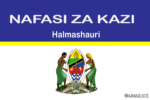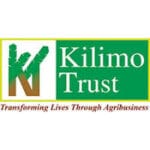AboutXitsonga
Xitsonga is one of the official Indigenous languages recognized by the government of South Africa as a medium of instruction in early childhood and a language in which literacy can be developed. Xitsonga is a Bantu language, which has a subject-verb-object order, like most other Bantu languages.
Xitsonga is the language of the Vatsonga, who was among the first nations to occupy the eastern coast of Africa south of the Zambezi by the 13th century. They occupied the coastal strip from Kosi Bay to the Save River, stretching up to the Mkhuze River and the Lebombo Mountains in the south and west. At that time, no single language was referred to as Xitsonga because the Vatsonga lived as clans under different chiefs. They spoke other clan tongues such as Xihlengwe, Xinkuna, Xiluleke and Xihlave. “The term Tsonga is, therefore, linguistically, only an embracing or generic name which does not indicate a specific language spoken, but only the totality of all the Tsonga dialects” (Baumbach:1974). In various stages of its history, the language has been referred to as Xigwamba, Thonga, Changana and Shangaan-Tsonga.
Xitsonga ISO codes are: ISO 639-1 ts; ISO 639-2 tso; ISO 639-3 tso; Guthrie code: S.53
Xitsonga has two main sister languages, Xirhonga and Xitshwa, spoken in Mozambique. The colonial scramble for Africa and the Mfecane wars in the 1800s greatly destabilised the Southern African landscape. The impact of Nguni invasions and the formation of the Gaza Empire, in particular, played a very significant role in the history of the Vatsonga and their language, with Manukosi’s invasion having the most impact. Manukau, who was sent by Shaka to invade the land of the Vatsonga and later named himself Soshangane, established the Great Gaza Empire and subsequently named his subjects Amashangane (Machangana) after his name. This name derives from the isiZulu stem change, which means “sudden appearance” or “surprise”. It also implies ukuzulazula (to wander). Manukosi invaded and defeated many tribes. His strategy was to appear suddenly and take them by surprise. Therefore when he praised himself, he would say, “owashanga imizi ya Bantu” (one who took by surprise other people’s villages) (Jaques, 1938). However, Junod (1927:15) argues that the name Changana was there in Mozambique long before the arrival of the Nguni. He argues that possibly a Mutsonga chief called Tshangaan (Changana) had resided in the lower Limpopo valley because that area seems to have been referred to as Ka Tshangaan.Setswana is an official language and lingua franca of Botswana, spoken by a little over two million inhabitants. The majority of Setswana speakers are found in South Africa, where a little over four million people talk about the language and where an urbanised variety known as Pretoria Sotho is the principal language of that city. Until 1994, South African Tswana people were notionally citizens of Bophuthatswana, one of the bantustans of the apartheid regime. Although Setswana is significantly spoken in South Africa and Botswana, a few speakers are also found in Zimbabwe and Namibia, where 29 400 and 12 300 people talk about the language.











